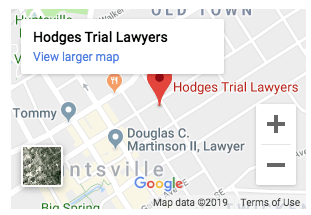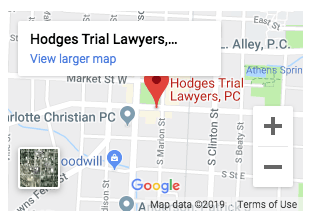When the weather changes from hot to cold, it is important to check that vehicles are properly prepared for the transition. While all drivers should insist on driving well-maintained cars throughout year, autumn seems to be a good time to ensure that vehicles are safe for driving and can prevent a car accident.
In addition to ensuring that a car is running smoothly, a solid motor vehicle check should include inspecting brakes and brake pads, swapping out old or deteriorating windshield wiper blades, and examining tires for signs of wear. Once a driver’s vehicle is in good shape for the upcoming season, the driver may also benefit from safety tips. Fall weather presents its own dangers. Drivers should be mindful of certain road conditions that are often prevalent in autumn.
Are Autumn Leaves Dangerous?
The first thing that comes to mind when thinking of fall is the colorful leaves. The changing colors enrich the landscape; however, it is important for drivers to acknowledge that autumn leaves create dangerous road conditions. Scattered leaves on roadways can cause slippery surfaces.
A street covered with leaves can cause a driver to lose traction with the road, which can lead to a serious car wreck. When these leaves become wet with rain, the danger only increases. Wet or dry, a sheet of fallen leaves can obstruct road markings, such as turn-only lanes and merging signs.
Leaves can cover potholes or bumps in the road that may cause vehicle damage or even an accident. Piles of leaves at the edge of the road can create a road obstruction that drivers must navigate around. These piles often take up space meant for parked cars or bicycle lanes, creating dangers when parked cars are positioned far away from curbs. Bicyclists must also compensate by parking further into the road because of the leaves. The accumulation of leaves in sewers and other drainage areas can create clogs that cause puddles that also impact safety.
How Can I Stay Safe in School Zones?
Another major safety issue for drivers in fall is school zones. Drivers should remain aware that children are going to and from school, and they are not always focused on safety. Students can be careless when crossing streets or when they are dropped off by school buses. Drivers should follow safe driving practices around school buses and school zones. It is imperative to always be focused in these areas.
Another important consideration is new drivers. Teenage drivers are adjusting to driving, and motorists should be cautious around high schools. Another helpful tip is to be cautious when students are going to and from school.
Does the Light Change Affect Safety?
Another change that affects driving in the fall is early sunsets. Darker road conditions are encountered earlier in the evening, which can impact visibility during a daily commute. Darkness can impact a driver’s depth perception and other visual competences needed for safe driving.
At dusk, the sun’s angle can cause glare that hinders a driver’s ability to see the road ahead of them. Sunglasses can be extremely useful. Also, keeping windows clean and free of streaks can greatly reduce sun glare.
How Do I Combat Fog and Frost?
Another natural condition that affects visibility is fog. Fog is most common on fall mornings, and the glare can also reduce safety. Moisture and cooler temperatures combine to create fog. Drivers should engage fog lights or low beams, these lights shine lower on the surface of the road, which helps during navigation.
On occasion, temperatures in autumn will dip below freezing, especially overnight and in the early morning. Dropping temperatures can cause frost. A coating of frost on the road can be an invisible danger. Drivers should keep in mind that cold weather can create frozen road surfaces. It is important to be extremely cautious while driving on bridges and overpasses. These areas quickly freeze because of the cool winds.
Does the Weather Impact Tire Pressure?
One of the ways cooler temperatures affect safe driving has to do with tire pressure. Tires lose pressure over time; however, low temperatures speed up the loss of tire pressure.
Drivers should frequently check tire pressure throughout the cooler months. Checking tires should begin as soon as the weather starts to change. A car’s appropriate tire pressure can be found on a sticker inside the driver’s-side door, and it also listed in the owner’s manual.
Are Deer-Related Accidents Common in Autumn?
Deer and other animals are common road hazards in the fall. Autumn is mating season for deer. Car accidents involving deer and other wildlife are 3.5 times more likely to happen in November than during any other month of the year, according to the Insurance Institute for Highway Safety (IIHS).
Deer activity increases at dusk and dawn, which coincides with the times of day that drivers experience visibility issues that already make driving more difficult. The unexpected appearance of a deer in the roadway can create a perilous situation for a driver that may react by swerving into opposing traffic.
What Should I Do After I am Hurt in a Car Accident?
If an injured victim wants to file a personal injury claim after a car crash, they should contact a lawyer right away. It is important to start a claim immediately after an accident to avoid any complications. A lawyer will help with filing a claim and ensure that the process goes smoothly.
Huntsville Car Accident Lawyers at Hodges Trial Lawyers, P.C. Represent Clients Injured in Motor Vehicle Crashes
If you were hurt in a car accident caused by another driver’s negligence, you should be able to collect compensation. Our dedicated Huntsville car accident lawyers at Hodges Trial Lawyers, P.C. help victims secure compensation to pay for their medical costs and property damage. Complete our online form or call us at 256-539-3110 for a free consultation. Located in Huntsville and Athens, Alabama, we serve clients throughout North Alabama, Madison County, Limestone County, Marshall County, Jackson County, Morgan County, and Lauderdale County.



